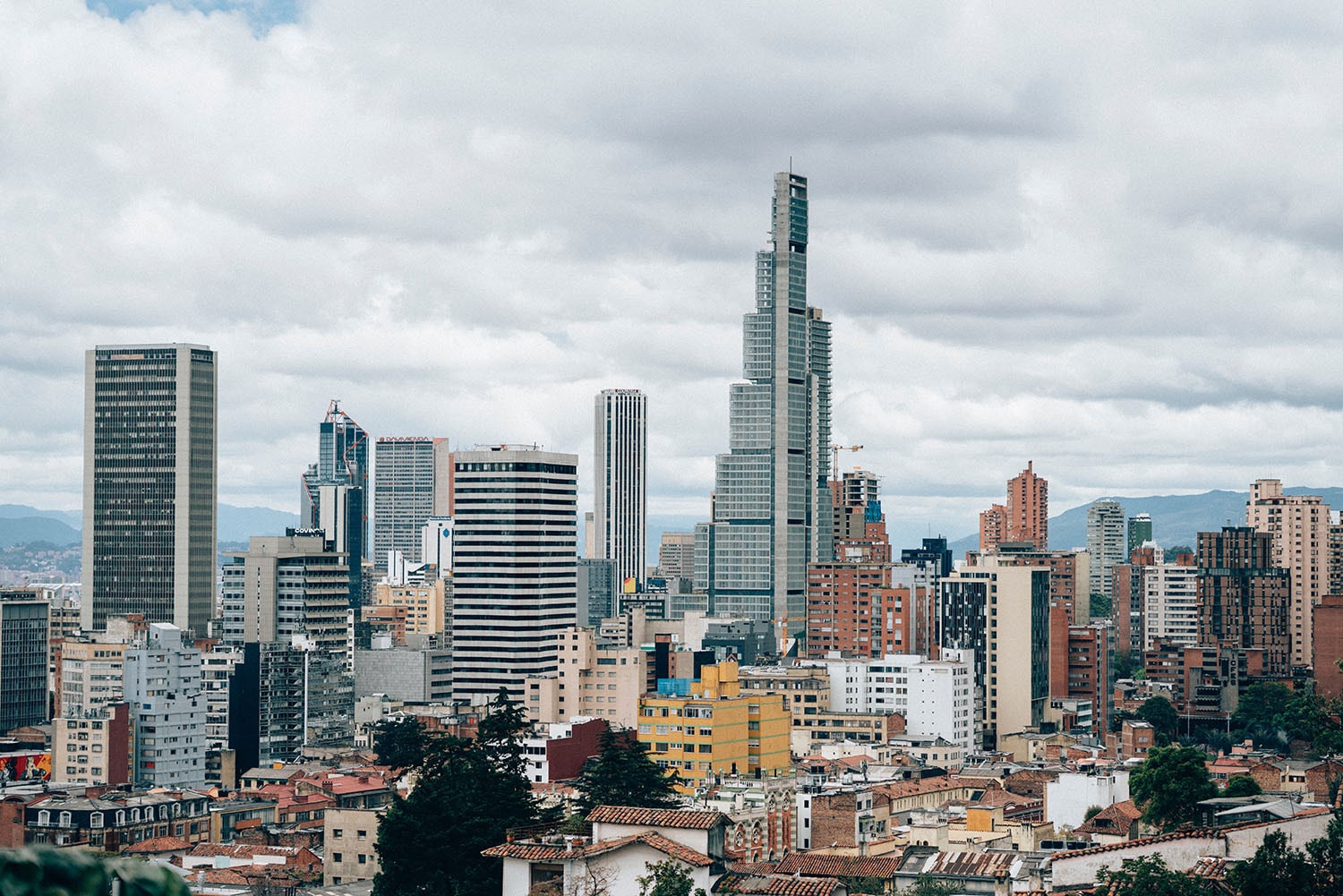Bogotá is the heart of Colombia—a city where colonial heritage meets the dynamic rhythm of a modern metropolis. Located high in the Andes Mountains at over 2,600 meters above sea level, it is one of the highest capital cities in the world. The city fascinates with contrasts: 17th-century churches stand alongside vibrant street art, cozy cafés share space with glass skyscrapers, and bustling markets neighbor world-class museums. Bogotá is rich in culture, history, gastronomy, and innovation. Here are fascinating and educational facts about the Colombian capital that you may not have known.
- Bogotá is one of the highest capital cities in the world. It sits on the Bogotá savanna plateau at an elevation of approximately 2,640 meters. Despite its proximity to the equator, the climate remains cool and stable throughout the year.
- The name Bogotá originates from the Muisca word Bacatá, which referred to an agricultural center. Before the arrival of the Spanish, the area was the heart of the Muisca civilization, one of the most advanced pre-Columbian cultures in South America. Their legacy remains present in many of the region’s traditions.
- Bogotá is Colombia’s cultural capital. The city is home to more than 50 museums, including the world-renowned Gold Museum, which houses over 55,000 pre-Hispanic artifacts. The Botero Museum, dedicated to Colombia’s most famous artist Fernando Botero, is also located here.
- The city features the largest network of bicycle paths in Latin America. Every Sunday and on public holidays, major streets are closed to traffic and transformed into recreational zones for pedestrians and cyclists—this event is called Ciclovía. The initiative has inspired cities around the world to promote sustainable urban mobility.
- The historical center of Bogotá, known as La Candelaria, preserves colonial architecture, cobbled streets, art galleries, hostels, and traditional cafés. It houses major universities, government buildings, and theaters. This district is the cultural and intellectual heart of the city.
- One of Bogotá’s most iconic religious sites is Monserrate Church, located on top of the mountain of the same name. It can be reached on foot, by funicular, or by cable car. The summit offers breathtaking panoramic views of the entire city.
- Bogotá is known for its street art and graffiti culture. The local government officially permits murals on many buildings, making the city one of the largest open-air urban art galleries in the world. Visitors can even join guided tours focused entirely on street art.
- With over 8 million residents, Bogotá is one of the largest cities in South America. It serves as Colombia’s economic and industrial center and generates a significant share of the country’s GDP. The city operates a modern bus rapid transit system called TransMilenio.
- Bogotá hosts the International Book Fair every year, one of the biggest literary events in Latin America. It brings together authors, publishers, translators, and readers from around the world. The event promotes literature and cultural exchange.
- The city is also one of Colombia’s leading academic hubs. It is home to numerous universities, including the University of the Andes and the National University of Colombia. Bogotá attracts students from all over the country and abroad.
- Due to its location near the equator, Bogotá experiences almost equal daylight and nighttime hours throughout the year. The sun rises around 6 a.m. and sets around 6 p.m. This consistency creates a balanced daily rhythm for residents.
- Bogotá’s culinary culture is unique and diverse. Traditional dishes include ajiaco, a thick chicken soup with corn and three types of potatoes, and changua, a milk-based soup with poached egg. The cuisine reflects indigenous, Spanish, and African influences.
- The city has more than 400 parks, the largest of which is Simón Bolívar Park. It hosts concerts, festivals, sporting events, and provides space for relaxation and outdoor activities. The park is a symbol of Bogotá’s commitment to healthy and active living.
- Bogotá actively develops ecological and urban innovation initiatives. It is part of the global network of smart cities and implements projects related to sustainable transportation, energy efficiency, and environmental protection. The city continues to evolve and set new standards in urban planning.
Bogotá is not just the capital of Colombia—it is a vibrant, evolving metropolis with a rich past and an ambitious future. These interesting facts reveal the depth and diversity of a city that often surprises even experienced travelers. You may not have realized how much culture, creativity, and energy lies in the heart of Colombia. Bogotá is a city that invites exploration and leaves a lasting impression.





